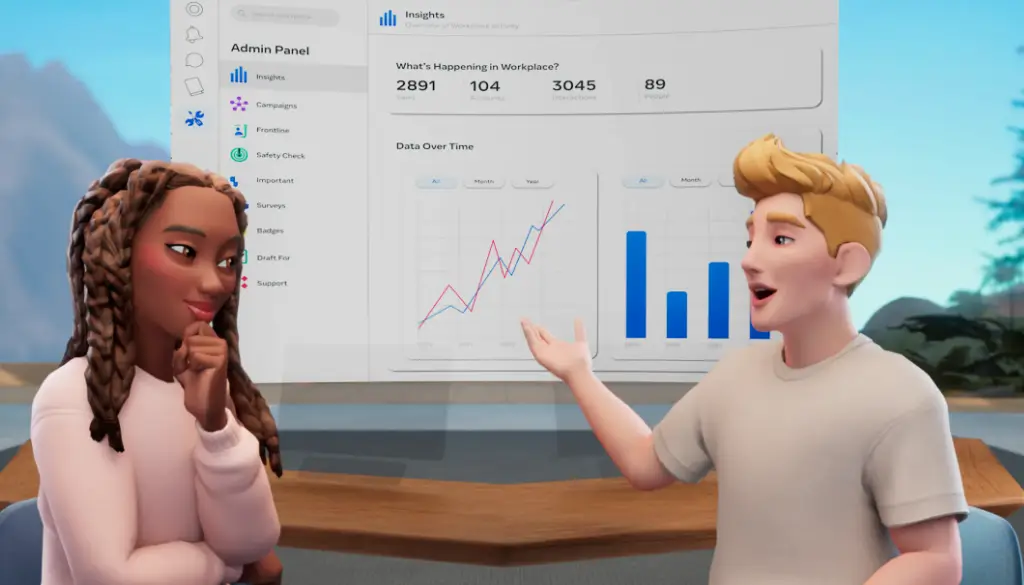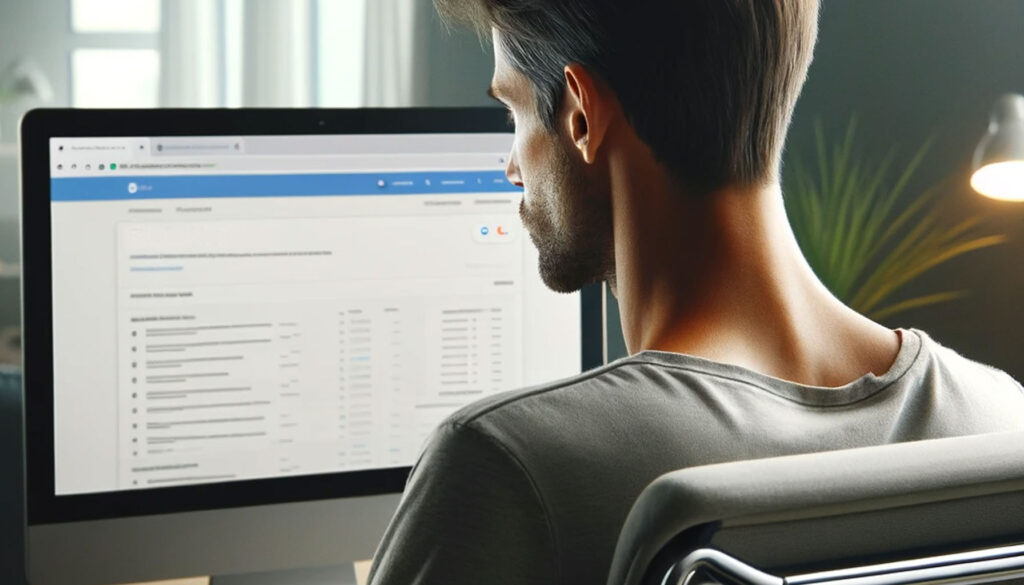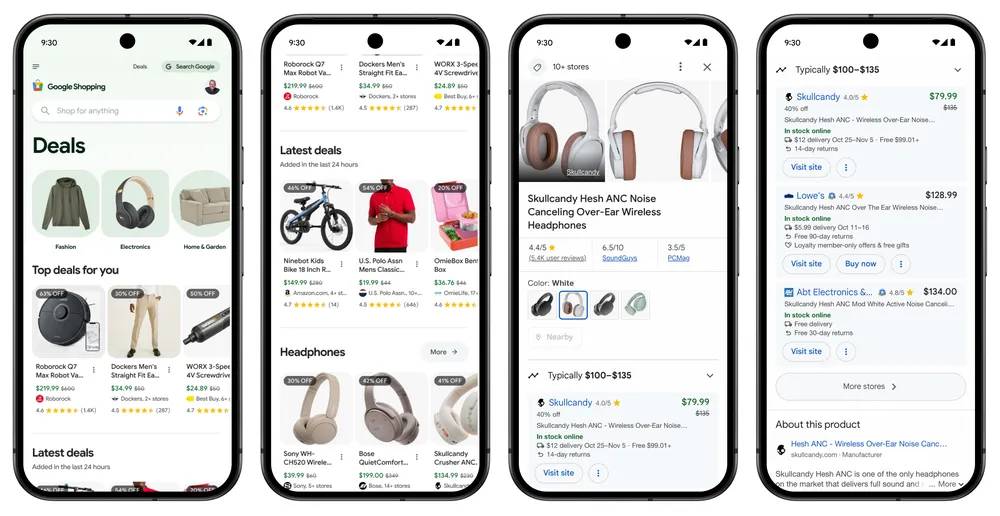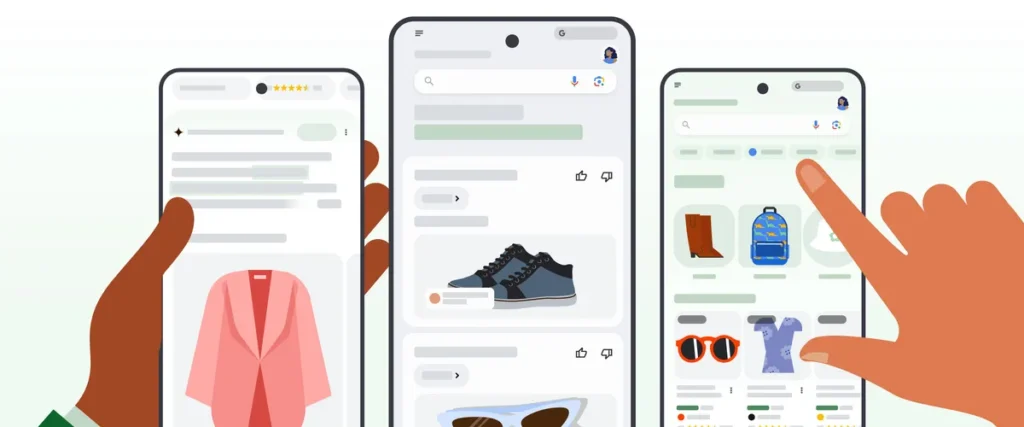I’ve clarified how social media impacts the new Search Everything Optimization (SEO). While Google claims that social signals (likes, shares, and comments) have no direct ranking influence, their indirect impact is significant. Earlier this year, a Google leak revealed how much they care about user engagement metrics, many of which are deeply tied to social media activity. Also, in 2024, Google lost a significant share of the search market to AI and social search.
The rise of Search Everything optimization has completely transformed the game. Think of the new SEO as your way of maximizing your exposure on every platform. AI can act as an intelligent assistant in this new environment, constantly optimizing your social media content and user experience. It’s like having a digital marketing expert available 24 hours a day, seven days a week, to ensure your content performs well across all platforms.
Understanding this dynamic will be important for your company’s online presence and communication with the target audience.
This post will examine social media platforms and how they might help your SEO efforts by optimizing and reusing website content for increased visibility and interaction as part of a larger social media strategy.
The Evolving SEO
Referring back to our article on Search Everything Optimization, “Today, the landscape of search has changed drastically. The options for conducting searches have multiplied from familiar names like Google, TikTok, FaceBook, Instagram, YouTube, and Pinterest to emerging platforms like Perplexity, ChatGPT, Claud, and more. This transformation in search capabilities is collectively known as Generative Search, and the task of optimization for this group is called GSO (you guessed it: Generative Search Optimization).”
With AI algorithms now better at understanding the context of content and user intent, the lines between social media engagement and SEO performance are blurring, with a greater emphasis on the role of content marketing. Social media SEO involves creating quality, relevant content and employing strategies to boost both social media presence and organic search results in social media SEO.
The Impact of AI on Social Signals
Google’s AI development, mainly the BERT and MUM algorithms, has increased the search engine’s ability to understand natural language and human intent. These advances mean that social media content, mainly when it generates high levels of engagement, can indirectly impact how search engines rank your website.
For instance, viral social media marketing can increase brand searches on Google, consequently sending a positive signal to the search engine regarding your brand’s authority and relevance. Besides, AI-powered technologies are now assessing search engines and social media trends to direct SEO plans, making social media posts a crucial part of SEO planning.
Understanding Social Media Platforms
Major Platforms
Understanding the unique features and characteristics of each central social media platform is essential. Here’s an overview of the most popular platforms and their distinct features:
-
-
- Facebook: With over 2.7 billion monthly active users, Facebook offers a range of features, including Facebook Groups, Facebook Live, and Facebook Marketplace. These features allow businesses to create communities, host live events, and sell products directly on the platform, making it a versatile tool for engaging with your target audience.
- Twitter: A microblogging platform that has been losing users rapidly but still has over 230 million monthly active users. It’s known for its real-time updates, hashtags, and character limit of 280 characters. Using trending hashtags can increase the visibility of your posts.
- Instagram: Part of Meta, Instagram is a visual platform with over 1 billion active users. It’s famous for its Stories feature, Reels, and influencer marketing. Instagram is perfect for brands leveraging high-quality visuals to tell their stories. The platform’s algorithm favors engaging content, so consistent posting and interaction with followers are critical.
- LinkedIn: A professional networking site with over 700 million users, LinkedIn is ideal for B2B marketing and recruitment. It’s a platform where businesses can share industry insights, company updates, and job postings. LinkedIn’s algorithm prioritizes content that sparks professional conversations, making it a valuable tool for establishing thought leadership. Additionally, tracking engagement metrics on LinkedIn can help businesses measure the effectiveness of their content and interactions.
- YouTube: The second-largest search engine, YouTube is a video-sharing platform with over 2 billion active users. Businesses need to optimize their YouTube videos for search. Engaging video titles, descriptions, and tags are crucial for visibility.
- TikTok: TikTok is a short-form video platform with over 1 billion monthly active users, known for its highly engaging and algorithm-driven content. The platform offers features like trending challenges, filters, and music integration, making it a hub for creativity and viral moments. TikTok’s For You Page (FYP) leverages powerful algorithms to showcase content tailored to users’ preferences, allowing brands to reach vast audiences quickly. Ideal for brands targeting younger demographics, TikTok thrives on authenticity and trends, offering opportunities for influencer collaborations and creative storytelling.
-
Each platform has its unique features, audience, and algorithm. Understanding these differences is crucial for developing a social media SEO strategy that resonates with your target audience.
What is Social Media SEO?
Social Media SEO (Search Engine Optimization) is optimizing your social media profiles and posts for increased visibility and ranking on social media platforms and traditional search engines. This involves strategically using relevant keywords, hashtags, and other SEO techniques to ensure your search engine content reaches a broader audience.
In today’s digital landscape, social media SEO is crucial for businesses aiming to increase their online presence, search engines drive more website traffic, and boost brand awareness. By optimizing your social media SEO content, you not only improve your chances of appearing in search results on platforms like Google but also enhance your visibility within the social media sites themselves. This dual approach ensures that your brand remains top-of-mind for potential customers, no matter where they are searching. Creating high-quality website content that can be shared on social media drives traffic and improves SEO performance.
Definition and Importance
Social media SEO is optimizing your social media profiles and posts to enhance their visibility and ranking on social media platforms and search engines. This practice is crucial for businesses aiming to bolster their online presence, drive more website traffic, and elevate brand awareness. Integrating social media SEO into your marketing strategy allows you to reach a broader audience, build a robust brand reputation, and drive more sales. In today’s digital age, where social media platforms are a primary source of information and interaction, leveraging social media SEO is beneficial and essential for sustained business growth.
Optimizing for Social Media Search
Profile Optimization
Optimizing your social media profiles is foundational to any effective social media SEO strategy. A well-optimized profile is complete, consistent, and reflective of your brand’s identity across all social media platforms. This means ensuring that every profile includes the following:
-
-
- A high-quality profile picture.
- An engaging cover photo.
- A detailed bio.
- Up-to-date contact information.
-
To optimize your social media profiles effectively, consider the following tips:
-
-
- Use Relevant Keywords: Use relevant keywords in your social media bio and profile description to boost searchability.
- Include a Website Link: To drive traffic, include a social media link to your website or a specific landing page.
- High-Quality Visuals: To create a professional appearance, use high-quality images for your social media profile picture and cover photo.
- Complete All Fields: To provide comprehensive information to your audience, complete all available social media fields, including contact information and hours of operation.
- Consistent Branding: To strengthen brand recognition, maintain consistent branding elements, such as logos and color schemes, across all social media platforms.
-
Ensuring that your profiles are complete and consistent makes it easier for customers to find and recognize your business, enhancing your social media SEO efforts.
Identifying Relevant Keywords for Social Media Content
Keyword research is a critical component of social media SEO. It helps you identify relevant keywords and phrases that your target audience uses to search for content on social media platforms. Here’s how to conduct keyword research for social media:
-
-
- Use Keyword Research Tools: Use tools like Google Keyword Planner, Ahrefs, or SEMrush to find relevant keywords and phrases. These tools provide insights into search volume, competition, and trends, helping you choose the most effective keywords for your content.
- Analyze Competitors: Research your competitors’ social media content and identify their keywords. This can give you an idea of what’s working in your industry and help you find gaps you can fill with your content.
- Use Social Media Listening: Monitor social media conversations about your business, industry, or niche to find important keywords. Tools like Hootsuite Insights or Brandwatch can help you track mentions and discussions, providing valuable insights into your audience’s language.
- Identify Long-Tail Keywords: Concentrate on long-tail keywords with less competition and greater conversion rates. These more specific keywords indicate a higher intent to purchase or engage, making them valuable for driving targeted traffic.
-
Once you’ve identified relevant keywords, implement them in your social media content, including:
-
-
- Captions: Use keywords in your captions to help social media search engines understand the substance of your post. This might increase the visibility of your posts on social media platforms.
- Hashtags: Use relevant hashtags to categorize your content and make it discoverable. Hashtags can significantly increase the reach of your posts, especially on platforms like Instagram and Twitter.
- Meta Descriptions: Use keywords in your meta descriptions to optimize your social media posts for search engines. This can improve their visibility in search engine results pages (SERPs).
-
Content Optimization Strategies
To optimize your social media material for SEO, focus on providing high-quality, engaging, and relevant content that appeals to your intended audience. Here are some effective content optimization strategies:
-
-
- Use Relevant Keywords: Incorporate relevant keywords into your social media posts to help search engines comprehend your posting. This can significantly enhance the discoverability of your content.
- Mix of Hashtags: Use popular and niche hashtags to categorize your social media posts. This strategy increases the chances of your content being discovered by a wider audience.
- Optimize Multimedia: Optimize images and videos by adding alt-text, descriptions, and relevant keywords. This not only improves accessibility but also boosts SEO.
- Leverage Analytics: Use social media analytics to track the performance of your posts. This data can provide insights into what works best, allowing you to adjust your content optimization strategies accordingly.
-
Implementing these strategies can enhance the visibility and engagement of your social media content, driving better SEO results.
How Social Media Helps SEO
Amplifying Content Reach And Engagement
Social networking networks effectively amplify your content, expanding its reach beyond your website’s usual readership. Content distribution is important to ensure that your material reaches a wider audience.
By sharing and promoting your social media marketing content across multiple sites, you open up a large network of potential readers, customers, and influencers with whom you can share your message. Also, adding YouTube videos to your mix can greatly improve your visibility because these videos are often optimized for Google due to the popularity of the social media platforms and Google owning YouTube. Quality website content creation that can be shared on social media is very important in driving traffic and improving SEO performance.
Example: Last month, one of my clients published an article about their show on their website. When we shared it across their social platforms with some AI-optimized messaging, it went viral on TikTok. The result? Their website traffic skyrocketed, and their Google rankings improved significantly in the following weeks. This wasn’t just luck – it was the power of social media and SEO working together.
Enhancing Link-Building Opportunities
Backlink opportunities remain an essential component of SEO, suggesting your material is valuable and authoritative to search engines.
Social media can help you gain these backlinks by exposing your material to individuals and organizations who may link to it from their own websites or blogs.
Example: An AI startup released an exciting piece about new technology. By promoting that post on LinkedIn, industry professionals may notice and refer to it in their own blogs or articles, resulting in valuable backlinks.
Social Media Profiles In Search Engine Results Pages And Brand Visibility
Your social media profiles are extensions of your brand and can significantly enhance your brand visibility by appearing prominently on search engine results pages (SERPs).
Optimizing these social media marketing profiles improves your online presence and opens up new avenues for users to discover and interact with your company.
In its recent updates, Google has emphasized results from user-generated material on Reddit. Thus, participating in relevant conversations and controlling your brand on social platforms is becoming increasingly important to your SEO strategy.
Example: When people search for our clients brand, we recommend they push out a consistent and dynamic social media profile alongside their website in the search results, occupying more real estate on the SERP and increasing the brand’s visibility.
Building Brand Trust and Authority
In a crowded digital marketplace, establishing trust and authority is essential. Building a positive online reputation is crucial for gaining consumer confidence. Social media enables you to demonstrate your knowledge, interact honestly with your audience, and create a community around your brand, all of which contribute to a more substantial, more trustworthy online presence.
Example: A financial advisor routinely gives expert thoughts on YouTube, responding to followers’ requests and discussions. This persistent presence establishes credibility, enticing consumers to visit their website for more detailed information.
Increasing Social Media Reach
To expand your social media reach, focus on building a solid presence, engaging with your audience, and creating shareable content. Here are some strategies to consider:
-
-
- Social Media Advertising: Invest in social media advertising to reach a broader audience and increase brand awareness. Targeted ads can help you connect with potential customers who might not have discovered your brand otherwise.
- Collaborate with Influencers: Partner with influencers and other businesses to tap into their follower base. Influencer collaborations can significantly boost your social media reach and credibility.
- Share User-Generated Content: Encourage your audience to create and share content related to your brand. Sharing user-generated content not only increases engagement but also builds a sense of community around your brand.
- Engage and Analyze: Regularly engage with your audience by responding to comments and messages. Use social media analytics to track the performance of your reach strategies and make necessary adjustments.
-
By focusing on these strategies, you can effectively increase your social media reach and enhance your overall online presence.
Content Strategy for Social Media
High-Quality and Consistent Content
A robust content creation strategy is essential for maximizing the impact of your social media SEO efforts. High-quality, consistent content not only engages your target audience but also signals to search engines that your brand is active and authoritative. Additionally, creating high-quality website content that can be shared on social media is crucial for driving traffic and improving SEO performance.
To develop an effective content strategy for social media, follow these guidelines for social seo:
-
-
- Use Relevant Keywords and Hashtags: Incorporate relevant keywords and hashtags into your posts to improve social seo discoverability.
- Create a Content Calendar: Plan your social seo content in advance using a content calendar to ensure consistency and timely posting.
- High-Quality Visuals: Use high-quality photographs and videos in your postings to increase engagement and shareability.
- Engage with Your Audience: Respond to comments and messages to establish a feeling of community and increase social SEO involvement.
- Share User-Generated Content: Highlight content created by your followers to build trust and encourage more user interaction.
- Analyze Performance: Use social SEO and social media analytics tools to track the performance of your posts and adjust your strategy based on what works best.
-
By focusing on high-quality and consistent social SEO content, you can build a solid online presence that resonates with your target audience and supports your overall social media SEO strategy.
Measuring Success with Social SEO
Metrics and Tools for Evaluation
To assess the performance of your social media SEO campaign, you must track the relevant indicators and use the appropriate tools. Here are some essential metrics and tools to evaluate your social media SEO performance:
-
-
- Engagement Metrics: Track likes, shares, comments, and other engagement metrics to measure the success of your social media content. High engagement indicates that your content resonates with your audience and can lead to increased visibility and traffic.
- Website Traffic: Monitor the traffic generated from social media platforms to your website. Tools like Google Analytics can help you track the source of your traffic and understand which social media platforms are driving the most visitors.
- Conversions: Track the number of conversions, such as leads, sales, or sign-ups, generated from social media. This metric is crucial for understanding the ROI of your social media efforts. Conversion tracking can be set up using tools like Google Analytics or social media advertising platforms.
- Social Media Analytics Tools: Use tools like Sprout Social, Buffer Analyze, or Hootsuite Insights to track your social media performance. These tools provide detailed analytics on your social media activities, helping you understand what’s working and what needs improvement.
- SEO Tools: Utilize tools like Ahrefs, SEMrush, or Moz to track your website’s SEO performance and identify areas for improvement. These tools can help you monitor your search engine rankings, backlinks, and overall SEO health.
-
By tracking these metrics and using the right tools, you can evaluate the success of your social media SEO strategy and make data-driven decisions to improve your online presence. This approach ensures that your efforts are aligned with your business goals and that you’re continuously optimizing your strategy for better results.
Analytics and Tracking Tools
To measure the success of your social media SEO strategies, it’s essential to use analytics and tracking tools. Here are some popular tools to consider:
-
-
- Hootsuite: This social media management tool offers comprehensive analytics and tracking features, helping you monitor your social media performance and refine your strategies.
- Sprout Social: Another robust social media management tool, Sprout Social provides detailed analytics and tracking capabilities, allowing you to gain insights into your social media activities.
- Buffer: Known for its scheduling features, Buffer also offers analytics and tracking tools to help you evaluate the effectiveness of your social media posts.
- Google Analytics: A powerful web analytics tool, Google Analytics provides valuable insights into your website traffic and social media performance. It helps you understand which social media platforms are driving the most traffic to your website.
-
By leveraging these tools, you can track the performance of your social media SEO strategies, make data-driven decisions, and continuously optimize your approach for better results.
Social Media SEO Strategies in Action
Examples
To illustrate the effectiveness of social media SEO strategies, let’s look at some real-world examples:
-
-
- A specialty shoe retailer used Instagram to showcase their latest products. By optimizing their posts with relevant keywords and hashtags, they significantly increased their visibility. Collaborating with micro influencers further amplified their reach, resulting in a 30% increase in website traffic and a notable boost in sales.
- A tech startup leveraged LinkedIn to share industry insights and company updates. By consistently posting high-quality content and engaging with their audience, they established themselves as thought leaders in their field. This strategy not only enhanced their brand authority but also led to valuable backlinks from industry blogs, improving their search engine rankings.
-
These examples demonstrate how effective social media SEO strategies can drive tangible results, from increased website traffic to higher sales and improved search engine rankings. By implementing a similar approach, you can enhance your social media presence and achieve your business goals.
Conclusion
Social media and SEO are more interconnected than ever. The advancement of Google’s algorithms, as well as the introduction of AI optimization, have increased the impact that social media has on your SEO efforts. By effectively exploiting social channels to publish information, engage with your audience, and establish brand authority, you can indirectly improve your search engine rating.
Remember that while social media signals are not direct ranking criteria, their impacts, such as higher traffic, more backlink opportunities, and improved brand perception, have a substantial effect on your overall SEO success.
To stay ahead in this ever-changing climate, embrace the interplay between social media and SEO. By incorporating these methods into your digital marketing strategy, you will not only improve your SEO efforts but also create a stronger and more engaged online presence.








